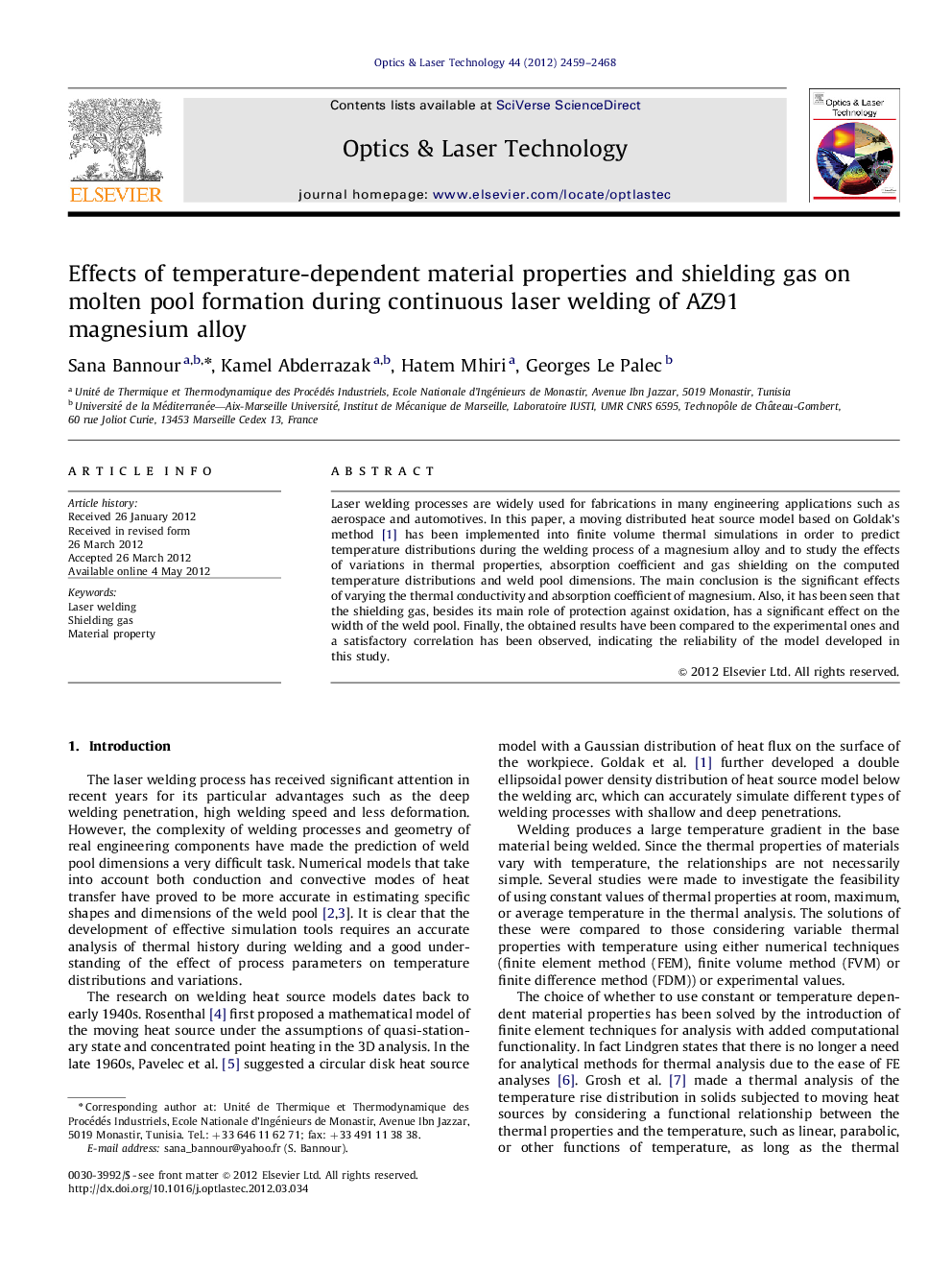| Article ID | Journal | Published Year | Pages | File Type |
|---|---|---|---|---|
| 739480 | Optics & Laser Technology | 2012 | 10 Pages |
Laser welding processes are widely used for fabrications in many engineering applications such as aerospace and automotives. In this paper, a moving distributed heat source model based on Goldak's method [1] has been implemented into finite volume thermal simulations in order to predict temperature distributions during the welding process of a magnesium alloy and to study the effects of variations in thermal properties, absorption coefficient and gas shielding on the computed temperature distributions and weld pool dimensions. The main conclusion is the significant effects of varying the thermal conductivity and absorption coefficient of magnesium. Also, it has been seen that the shielding gas, besides its main role of protection against oxidation, has a significant effect on the width of the weld pool. Finally, the obtained results have been compared to the experimental ones and a satisfactory correlation has been observed, indicating the reliability of the model developed in this study.
► A volumetric heat source was proposed to model the incident laser beam power. ► Weld pool is affected by absorption coefficient and thermal conductivity. ► Shielding gas takes part in a fast solidification behind the weld pool. ► Shielding gas acts on the weld pool shape. ► Good agreement between numerical and experimental results has been observed.
